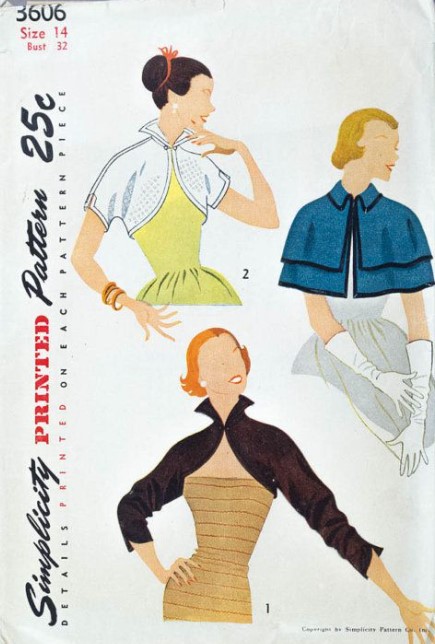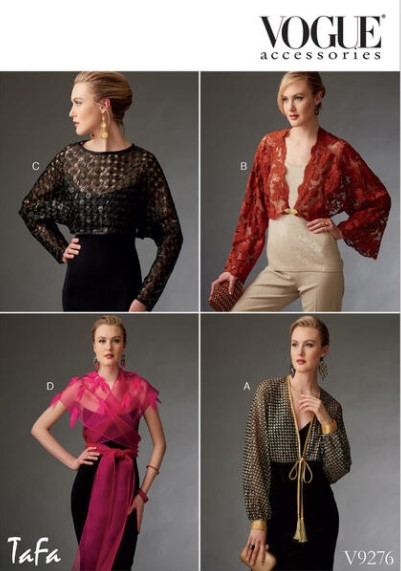Do you ever look something up online and find yourself stumbling onto a site that grabs your attention and pulls it away from whatever you were searching for in the first place? It happens all the time to me―especially when I’m researching a new book. But it also happens sometimes when I’m looking for sewing-related “stuff”―patterns, technical advice, new equipment. I recently stumbled on the Lekala patterns site (a Russian company, as it turns out) when I searched for shrug and bolero patterns. And, like Alice in Wonderland, I found myself falling deeper and deeper into a rabbit hole! What an interesting site…and what an interesting concept!

Anyone who reads my pieces more or less regularly knows that I’m not a fan of pdf patterns, particularly those produced by the numerous indie pattern companies around these days. That being said, they do have a few selling points: the moment you pay for them, you have them.
- No waiting for them to arrive in the mail.
- They are usually cheaper than printed patterns.
- They are…
…well, that’s usually about it for me. I often find the indie patterns underdesigned and possessed of odd ticks (like 28 sizes on one pattern or weird seam allowances). Then, if they’re pdf patterns on top of that, there is all that printing and taping together and then transferring onto paper you can see through blah, blah, blah. Finally, there is the matter of the often odd sizing. So, why in the world would I be captivated by Lekala patterns?
There is one main reason: they are custom-fitted to my (and your) personal body measurements. Yes, that’s right. When you select a design you like (and there do seem to be a few I like), and you note their price (very cheap), you then input your body measurements and order the pattern based on those. They send you an email confirming all of this, then, and only then you are invited to pay so that you can download your personalized pattern.
Of course, then you’re left with the hateful job of putting said pdf pattern together…but, it’s almost worth it. And here’s my story.
I was looking for a pattern to use up pieces of leftover knit fabric. These were medium-weight stable knits. I actually found several on the Lekala site I liked and settled on Lekala 4885. This would be a test―a test of whether the sizing could be as accurate as it promised.

I put in my body measurements, ordered the pattern, put it together and cut it out.

But first, I had to choose which pattern scraps to use.
As I began to sew it together, I decided that I’d not try it on at all until it was finished, just to see if it really was customized for me. Along the way, I made a couple of observations about the pattern that leads me to a bit of advice if you decide to follow me down that particular rabbit hole.
They offer the option of ordering the pattern with or without seam allowances for an extra fifty cents (USD). That seemed to me to be a small price to pay for the convenience of not having to add them. Forget about it. The seam allowances they added were far too small and, in any case, inconsistent. In some places, they were 3/8-inch seam allowances. In other places, they were ¼-inch. To make matters worse, I found two seam allowances that were supposed to join with one another that were different. In the end, I had to fix some of them. Then, I don’t know about you, but when I make a piece of clothing, I don’t’ think of myself as a sweatshop worker in Sri Lanka where there is a need to save even the smallest tidbit of fabric. I can have larger seam allowances to work with. If they’re ¼-inch or even 3/8, if you must know, I can’t serge them perfectly. I hate that. (PS maybe you can, but it’s a bridge too far for me!)

So, was I able to hold myself back from trying it on until it was finished? Almost. When I had it hanging on Gloria junior, I thought I could see that it would make quite a nice colour-blocked summer top with drop shoulders and no sleeves. If I were to make that kind of adjustment, I’d have to narrow those armhole openings a bit. I couldn’t figure out how much without trying it on. So, I clipped the side seams together and tried it on. I was tickled by how well it did fit. These over-sized pieces are often so tent-like that they don’t really flatter anyone, especially me. This one fit! And I was able to determine that if I were to narrow the sleeve opening by 2 inches, 4-7/8 inches from the neckline, I could rework the pattern for summer.

Well, I was so happy with the fit that I ordered another pattern (for only $3.49, you cannot go wrong, I figured).
I also wondered if Lekala might consider doing one of my designs, so I got in touch with them. Within a day, they got back to me to tell me how to propose a new design and to invite me to use their online computer-assisted pattern design software.
Here are the designs I proposed…
I am interested in CAD design, so I surfed on over. Oh. My. God. It’s complicated. But eventually, when I have lots of time (perhaps the next pandemic? Oh, no, let’s not go there!), I’ll watch their video and really get into it. In the meantime, I’m going to get started on my new piece for the Fabricville spring blog. See you there!



































You must be logged in to post a comment.